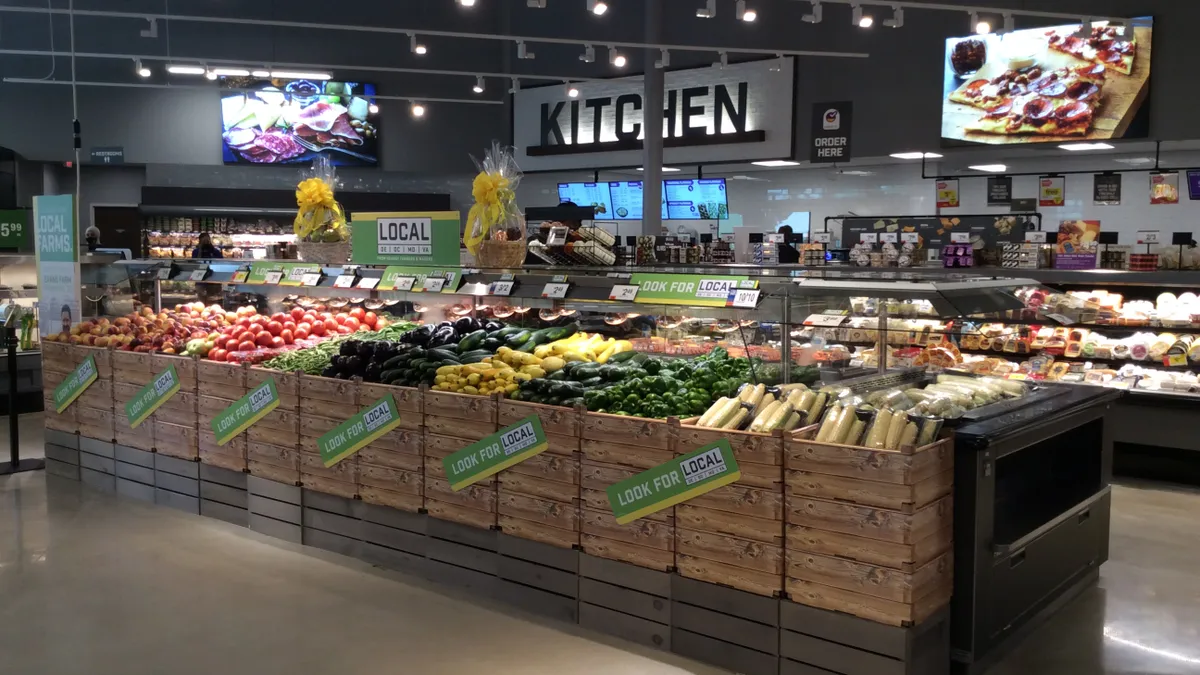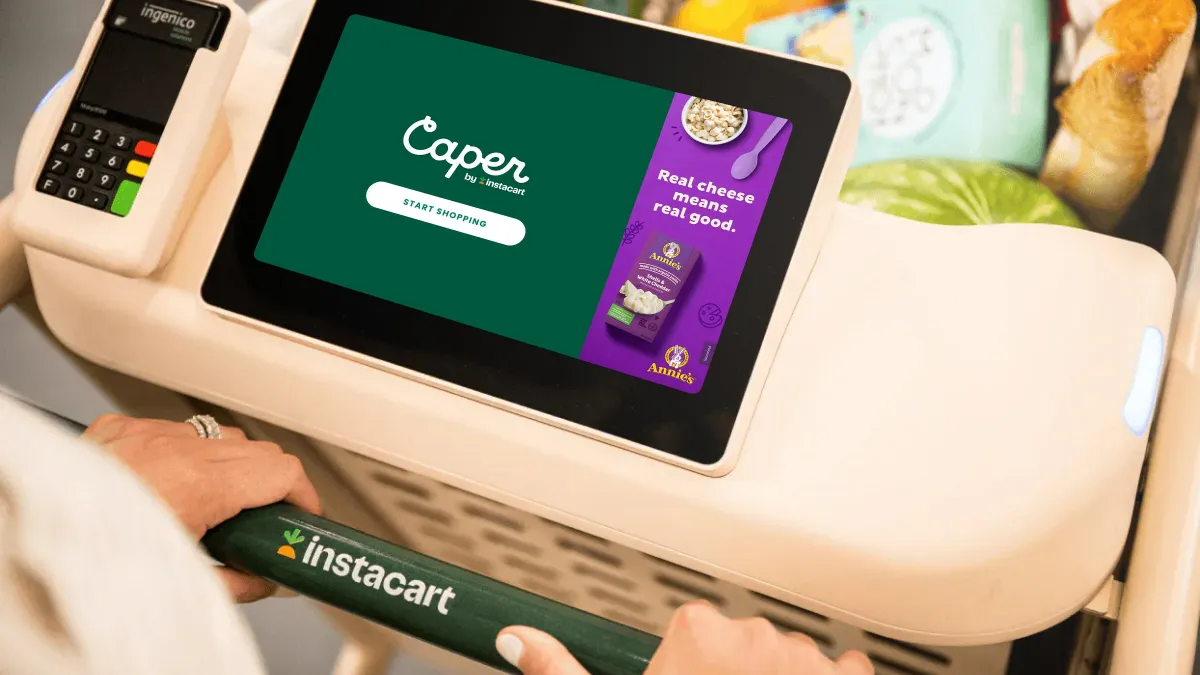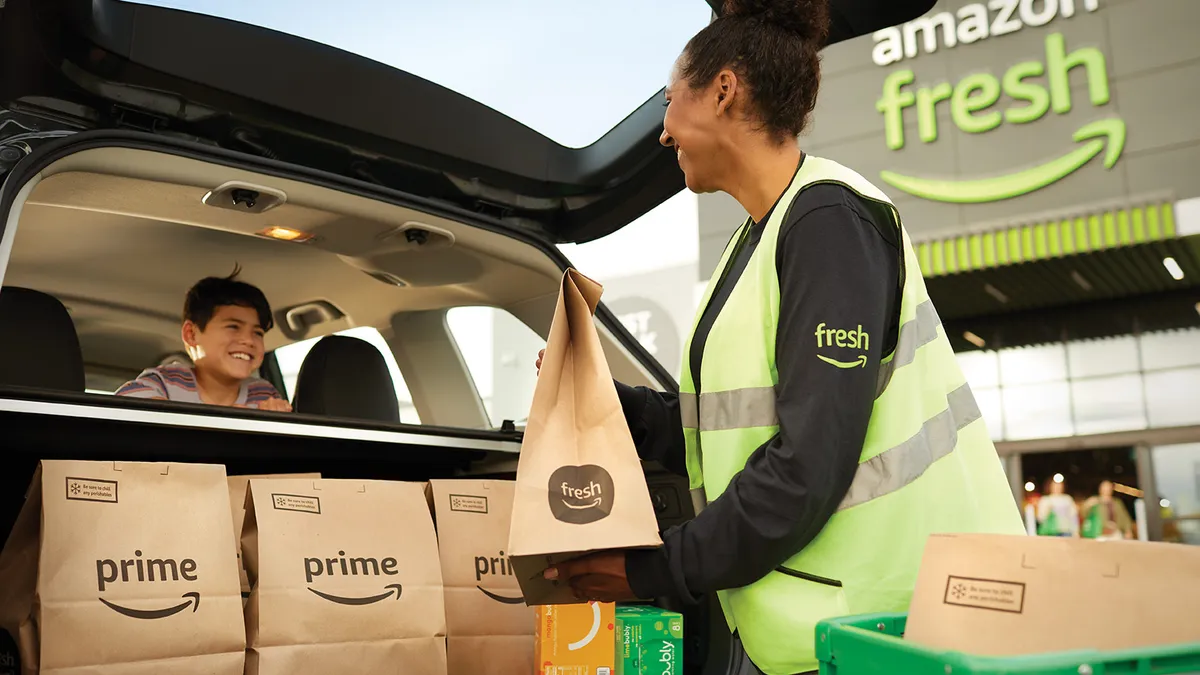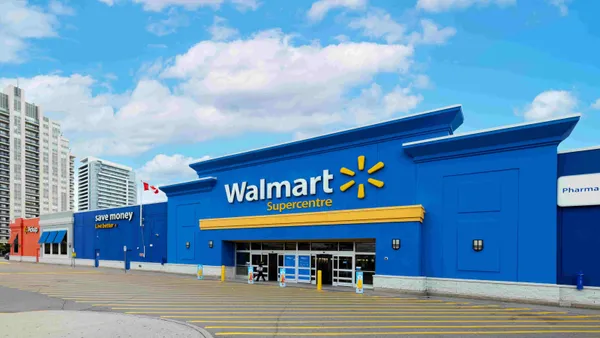In a year full of changes, one of the most surprising might be the fact that 2020 was the year the dinosaurs roared back to life.
I’m talking about traditional supermarkets. Prior to the onset of a global health crisis, these giants were scrambling to hold on to customer dollars that were slowly leaking away to other food retail formats and to fast-evolving restaurant operators. During the pandemic, those same qualities that had started to wear on consumers — the wide aisles, the overwhelming assortments packed with staple products — suddenly became major assets for a nation looking to load up and hunker down.
In hindsight, this probably wasn’t so surprising. Supermarkets have always benefited during natural disasters, and 2020 has essentially been one prolonged natural disaster. Nine months after the first lockdowns went into place, and with a vaccine now rolling out across the globe, shoppers are still consolidating trips and stockpiling goods.
But the descent is well underway. Quarterly comps and monthly sales have been coming down from their unsustainable peak this spring, and publicly traded grocers next year will be tying themselves in knots trying to make year-over-year sales declines look good. What’s at issue is not whether supermarkets can stem declining sales or not — they can’t fight gravity — but rather, where they will level off.
Supermarket CEOs like Vivek Sankaran of Albertsons and Rodney McMullen of Kroger have taken to pointing out that the pandemic has ushered in fundamental lifestyle changes that will benefit their companies over the long term. This includes more consumers working remotely and spending time in the kitchen, adding up to more dollars spent on dining in.
When I interviewed Sankaran on Albertsons’ IPO day in June, he mentioned, as he has in other interviews and in earnings calls, people rediscovering their love of baking cookies at home.
I think it’s precarious to bet your future on customers connecting with their inner Julia Child long-term. People lead busy lives even when they’re spending more time at home, and research has shown that the culinary flame that ignited during the pandemic has fizzled for many. So in addition to helping shoppers cook from scratch, there's arguably a greater need for prepared meals and quick kitchen hacks that streamline food prep.
Here, supermarkets have made some impressive strides of late, introducing fresh meal brands and value-added ingredients, all tied into digital. The Giant Company’s new All Set meal brand includes bundled meal ingredients, ready-to-heat and ready-to-eat selections, while ShopRite is piloting a fresh meal department that’s integrated with its ordering app and website. The focus is on flexibility: Whether you want to prepare dinner yourself, pop it in the oven or have it ready to eat, your local store has you covered.
Despite these improvements, however, core problems still exist for supermarkets that, if not addressed, could undo all their recent gains.
Retail Feedback Group’s (RFG) latest survey of 2,000 consumers found that while overall satisfaction with supermarkets has improved during the pandemic, these retailers achieved middling scores on differentiating qualities like employee friendliness and supporting their local communities — areas where they should be excelling. Even worse, the lowest-scoring differentiators for supermarkets, according to the survey, were those where execution will be vital for future survival, like displaying passion for food and offering a unique assortment of products shoppers can’t find anywhere else. Across these several differentiating qualities, supermarkets scored no higher than a 3.63 out of 5. The lowest, indicating whether shoppers’ believe their primary stores carry a unique assortment, scored just 3.27.
“[It's] not that there are not supermarket retailers that do well in these areas, but as a whole, the channel isn’t where it needs to be, especially as foot traffic returns to stores post-pandemic and other channels are more preferred for online food shopping compared to supermarkets,” Brian Numainville, principal with Retail Feedback Group, told me via email.
Having prime locations and keeping shelves stocked isn’t going to be enough, said Numainville. Supermarkets also have to be exceptional places to shop. He pointed out that a shopper giving their primary store a 5 for employee friendliness makes it four times as likely they’ll promote that store to family and friends.
E-commerce presents another troubling front for supermarkets despite recent gains in the channel, according to RFG’s data. The firm found that fewer consumers reported shopping their local supermarket online compared to earlier this year, and fewer now say they plan on shopping online with their primary store in the future. Walmart, meanwhile, has increasingly become the go-to online grocery stop for shoppers surveyed by RFG over the years, while Amazon in this latest survey scored highest among the grocery e-commerce retailers shoppers say they’ll use in the future. Amazon also excelled across customer experience metrics like ease of checkout and app and site performance.
These are not good signs for supermarkets, considering the ubiquity of Walmart and Amazon’s steep growth trajectory in grocery. It’s very easy for shoppers to switch retailers online. Millions of consumers have done so this year with just a few clicks as they search for better deals and product availability. And these companies are furthering their dominance through membership offers, new services and being the first to offer online payments for millions of food stamp recipients.
"As a whole, the channel isn't where it needs to be, especially as foot traffic returns to stores post-pandemic and other channels are more preferred for online food shopping compared to supermarkets."

Brian Numainville
Principal, Retail Feedback Group
How can supermarkets improve? Numainville said they have to execute on those essential differentiating qualities of food expertise, from having a unique assortment to hiring friendly, knowledgeable employees. On the e-commerce front, Bill Bishop, chief architect at Brick Meets Click, told me he expects retailers, spurred by the great leap forward in online shopping, to make significant improvements to both their online experiences and fulfillment operations.
"Seamless integration for online shopping is finally going to get top priority," he said. "In our experience, it really has not. Up until now, everybody's doing something well but hardly anybody is doing it all well. And I think that's going to change."
I’ll add one more: focus on solutions. As I noted in one of the first columns I wrote for this publication, supermarkets are struggling to meet consumers' needs for inspiration and practical ideas. Their stores, websites and apps all too often offer massive assortments without any effort to make them relevant for shoppers. Retailers have taken a step in the right direction by boosting their meal offerings across prep levels. But they need to continue to push personalized solutions through their digital channels and develop fresh merchandising techniques that emphasize practical solutions over product abundance.
There are plenty of progressive examples out there. Portland’s Basics Market, for instance, features several meal displays that carry all the ingredients needed to make a healthy dinner, rotating on a weekly basis. Tech firm Halla is trying to improve product recommendations using artificial intelligence and millions of data points that incorporate everything from restaurant menus to flavor compounds.
The pandemic has given supermarkets a chance — one they may not get again — to make key investments in improving their customer experiences. If they don’t, all the same forces that were rattling them before the global health crisis will go right back to work.





















